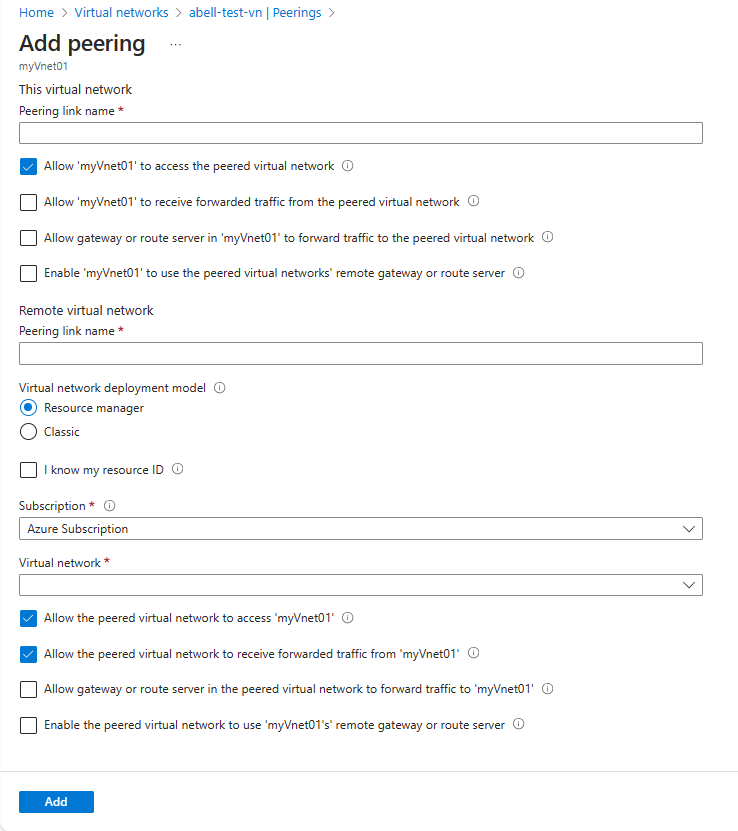Enable cross-virtual network connectivity with peering
- 10 minutes
Organizations with large scale operations create connections between different parts of their virtual network infrastructure. Virtual network peering enables you to seamlessly connect separate VNets with optimal network performance, whether they are in the same Azure region (VNet peering) or in different regions (Global VNet peering).
Network traffic between peered virtual networks is private. The virtual networks appear as one for connectivity purposes. The traffic between virtual machines in peered virtual networks uses the Microsoft backbone infrastructure, and no public Internet, gateways, or encryption is required in the communication between the virtual networks.
Virtual network peering enables you to seamlessly connect two Azure virtual networks. Once peered, the virtual networks appear as one, for connectivity purposes. There are two types of VNet peering.
- Regional VNet peering connects Azure virtual networks in the same region.
- Global VNet peering connects Azure virtual networks in different regions. The peered virtual networks can exist in any Azure public cloud region or China cloud regions, but not in Government cloud regions. You can only peer virtual networks in the same region in Azure Government cloud regions.

Benefits of virtual network peering
The benefits of using virtual network peering, whether local or global, include:
- A low-latency, high-bandwidth connection between resources in different virtual networks.
- The ability to apply network security groups in either virtual network to block access to other virtual networks or subnets.
- The ability to transfer data between virtual networks across Azure subscriptions, Microsoft Entra tenants, deployment models, and Azure regions.
- The ability to peer virtual networks created through the Azure Resource Manager.
- The ability to peer a virtual network created through Resource Manager to one created through the classic deployment model.
- No downtime to resources in either virtual network is required when creating the peering, or after the peering is created.
Fundamentals of virtual network peering (video)
This video reviews the basics of virtual network peering types. The entire video is available in the On Demand Instructor-led Training Series.
Configure VNet Peering
Here are the steps to configure VNet peering. Notice you need two virtual networks. To test the peering, you need a virtual machine in each network. Initially, the VMs won't be able to communicate, but after peering the communication works.
- Create two virtual networks.
- Peer the virtual networks.
- Create virtual machines in each virtual network.
- Test the communication between the virtual machines.
Note
When you add a peering on one virtual network, the second virtual network configuration is automatically added.
Gateway Transit and Connectivity
You can configure a VPN gateway in the peered virtual network as a gateway transit point. In this case, a peered virtual network uses the remote gateway to gain access to other resources. A virtual network can have only one gateway. Gateway transit is supported for both VNet Peering and Global VNet Peering.
Gateway Transit allows the virtual network to communicate to resources outside the peering. For example, the subnet gateway could:
- Use a site-to-site VPN to connect to an on-premises network.
- Use a VNet-to-VNet connection to another virtual network.
- Use a point-to-site VPN to connect to a client.
In these scenarios, gateway transit allows peered virtual networks to share the gateway and get access to resources. This means you don't need to deploy a VPN gateway in the peer virtual network.

Note
Network security groups can be applied in either virtual network to block access to other virtual networks or subnets.
Choose the best response for each question.